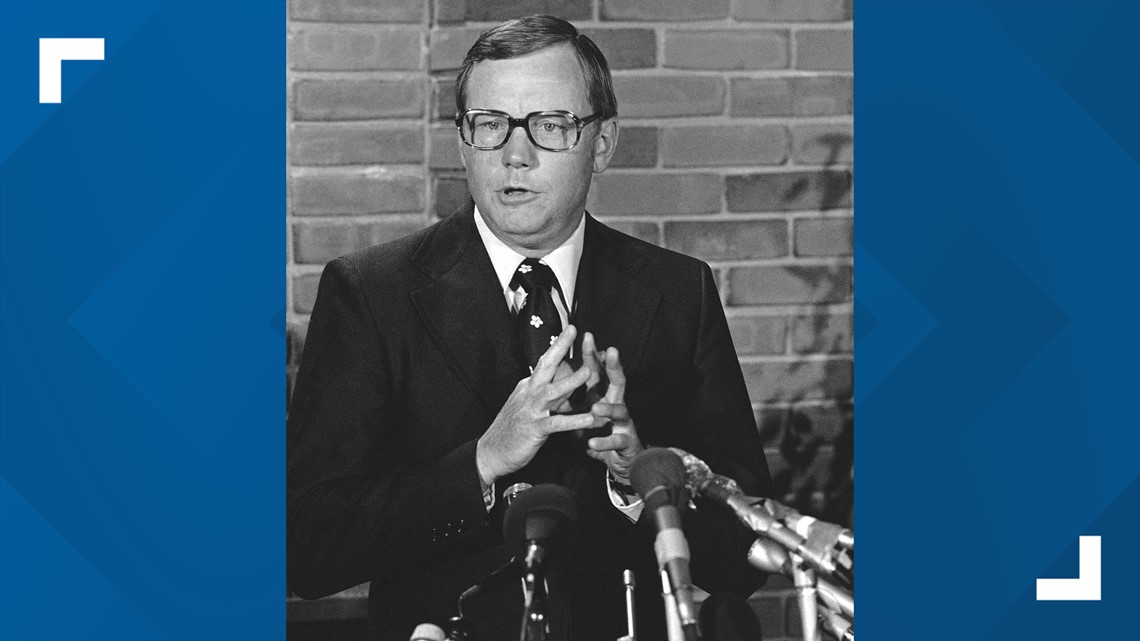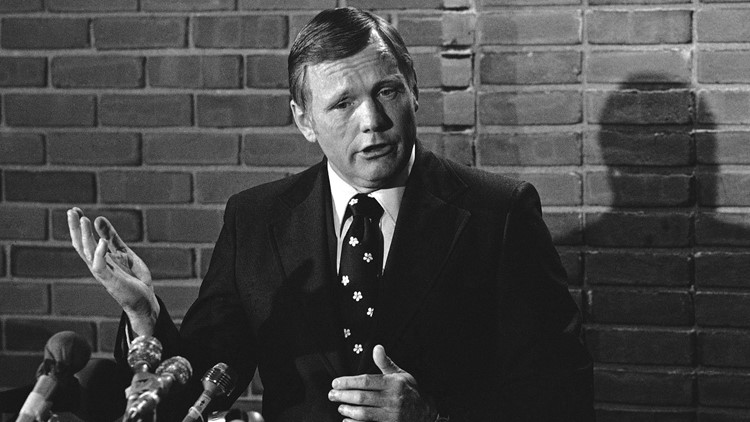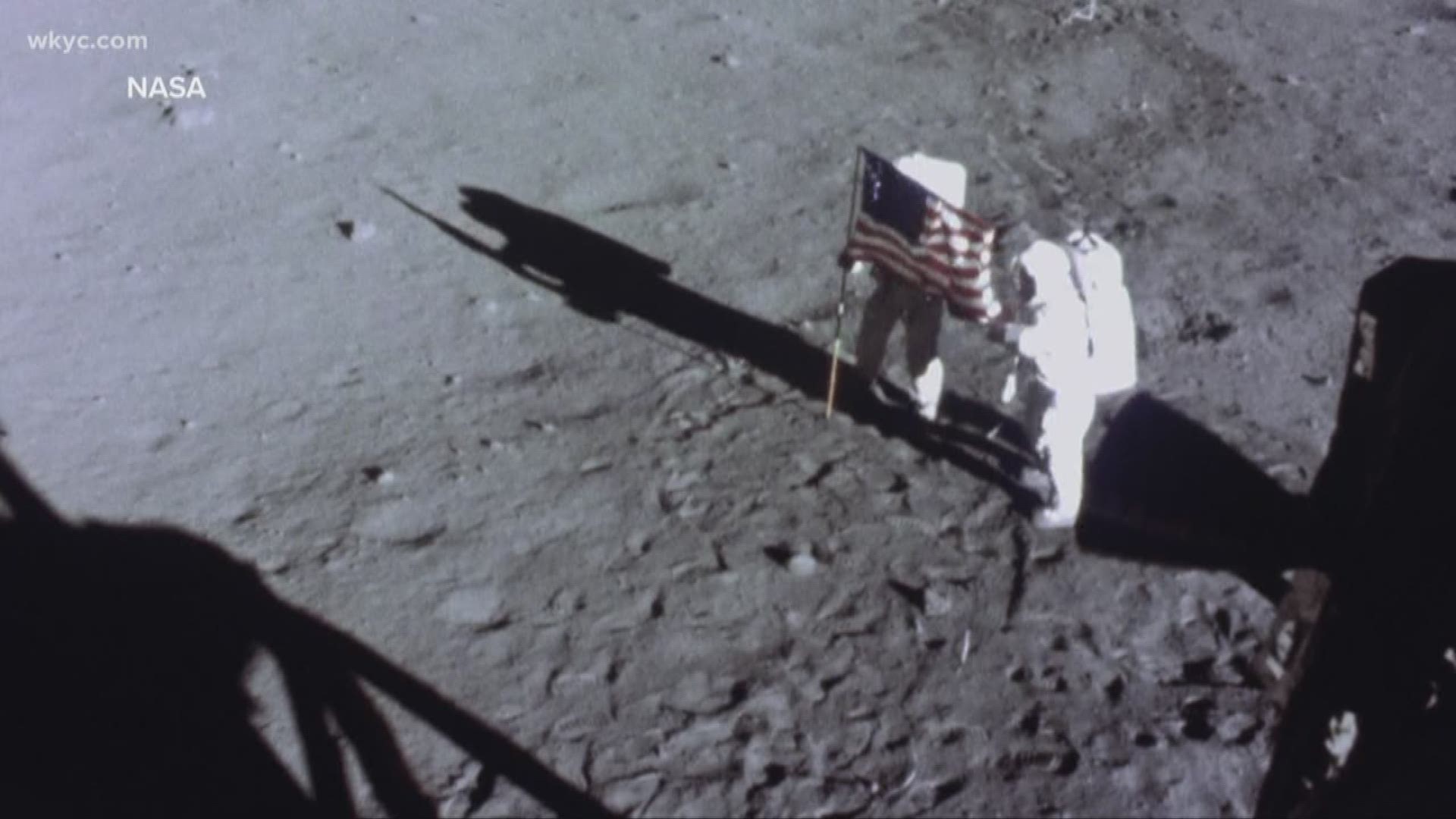CLEVELAND — Ten years after his historic mission to the moon where he walked into history as the first man to tread the surface of a world other than Earth, Neil Armstrong met with the world's press to speak of that scientific and technological achievement.
The news conference, held at the University of Cincinnati where Armstrong had accepted a job as a professor, was so significant, news organizations from around the world sent crews there to record the event.
WKYC-TV, Channel 3, in Cleveland sent me with a network crew to tell the story of the man from Wapakoneta, Ohio, who stepped off the ladder of a NASA lunar lander and walked into history, to be remembered as long as humans exist.
Armstrong was a soft-spoken man who never really seemed comfortable in front of cameras. He did interviews, of course, following that historic mission when he, Edwin "Buzz" Aldrin, and Michael Collins blasted off from the Kennedy Space Center in Florida and began that 240,000 trek through space to the moon. Four days later, July 20, 1969, while Collins remained in the Apollo 11 capsule orbiting the moon, Armstrong and Aldrin would step onto its surface.
Upon the return to Earth, the Apollo 11 spacemen were hailed around the world and celebrated for what they had done. Armstrong spoke often during the immediate weeks after the moonwalk, but was known to be visibly uncomfortable with the celebrity status which surrounded him. Throughout his life following the historic moon mission, Armstrong remained humble, turning down most requests for interviews and public appearances.
So the decision to meet with the world's press in 1979, a decade after the Apollo 11 mission, was itself historic. By then, Armstrong had become a teacher in the Department of Aerospace Engineering at the University of Cincinnati. It was there the first man on the man would meet with reporters, photographers, and others from around the globe.


The questions came quickly and Armstrong answered them, usually in a soft-spoken voice. There were the expected questions of how he remembered his time on the moon and with NASA both before and after. There were philosophical questions on how he thought the mission would be remembered through the approaching generations.
In my memory, there was a nagging questions I wanted to ask, but was somewhat reluctant to ask because I was unsure of the veracity of a story I had heard but could not remember where I had heard it or even when I had heard it. Still, the question was in my mind and in the back of my throat, if only I could state it.
Throughout the long session with Armstrong, who faced many dozens of cameras and scores of reporters, questions from other reporters peppered the air. Finally, as I thought we were close to ending the time with Armstrong, I decided to try my question, hoping I would not appear foolish in front of other reporters with a "Where did he get that question from?" response.
Finally, the man calling on reporters whose hands were raised chose me. It marked probably the longest question I have ever asked of anyone in my professional career.
I cleared my throat and slowly began to ask a question which began with a story I had heard of another American hero:
"Mr. Armstrong, I don't know if it is true—this story that I heard...and I don't know where I heard it—but I was told that years after Charles Lindbergh had successfully flown his Spirit of St. Louis single-engine airplane across the Atlantic, he hid in the Smithsonian Aerospace Museum where the airplane hangs from the ceiling, until after closing hours and got a night watchman or someone to get a ladder so he could climb up into his airplane and sit in it for the first time since that 1927 flight."
By then, the entire room was looking at me, and I had made a commitment with this long question. I swallowed hard, but continued.
"Like I mentioned, I don't know if it is true, but your Apollo 11 space capsule hangs from the roof of the Smithsonian National Air and Space Museum just like Lindbergh's plane."
The room was silent as my long question continued.
"I don't know if you ever heard that story, and if it is true, would you want to do the same as Lindbergh and climb back into your space capsule, Columbia, hanging from the ceiling of the museum?"
There came a wry smile at the corner of Armstrong's lip as he looked at me and with a deep breath, he answered with a soft voice still loud enough to be picked up by everyone in the room:
"Sir, yes. I've heard that story, too. And yes, I would very much like to climb back into the Apollo 11 command capsule."
I don't know if all the cameras in the room were rolling on my long question and his obviously heartfelt response to it, but I know my WKYC camera was rolling. With that, the man in charge of the historic news conference ten years after the moon mission closed out the session.
"Well," he said, smiling, "I think this would be a good place to end our session with Neil Armstrong."
With that, several reporters surrounded me and wanted to know where I had heard the Lindbergh story. I told them I did not know where I heard or how I had heard it. All I knew was that Neil Armstrong and I had heard the same story, and the first man to walk on the moon answered in a way which displayed a lot of emotion and strong feeling for the men and women who had helped him and the Apollo 11 crew reach the moon.
As well, there seemed to be a strong emotion for the aircraft which took them there which still hangs from the rafters of the Smithsonian Aerospace Museum.



